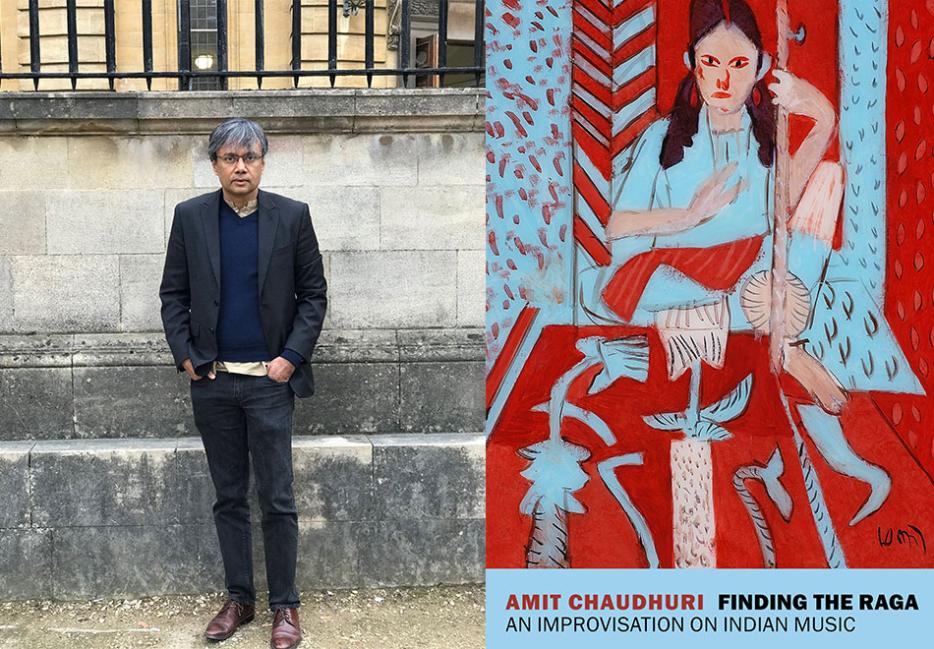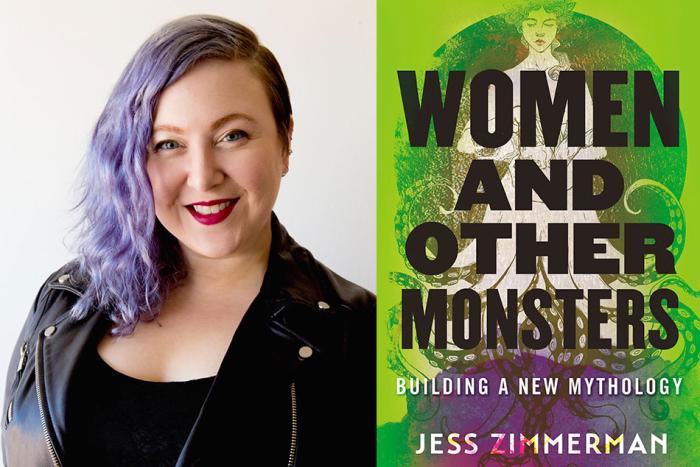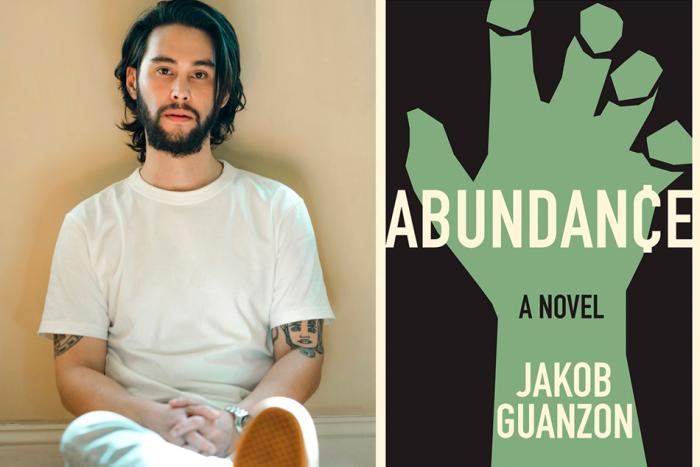In the summer of 2020, my Inbox fired news of scientific and literary worlds in equal proportions. A non-fiction book was to published in Spring 2021 by an Indian writer and musician, whom I’d never heard of. It was about the raga, a subject I also knew almost nothing about. But I was interested in the form, which I’d admired for its improvisational quality, its mind-blowing creativity, its beauty. Though one of the roots of the Sanskrit word raga is related to colour, there is no translation for it into Western music traditions. Roughly speaking, it is a set of melodic structures, subject to both rules and improvisation (akin to a “non-constructible set” in human language), and must be discovered by an artist through live performance. Its presence in Indian music is mentioned as early as in the Upanishads, just before the start of the common era.
I spent the next few days that summer devouring every bit of Amit Chaudhuri’s writing and all the interviews I could find. He talked about the role of improvisation in writing and how none of his fiction was memoir (even though in his latest novel, the main character shares his name, city, age, and profession). When I found a video of his raga-infused 2019 performance of Gershwin’s “Summertime” at the Institute for Ideas and Imagination at Columbia University, I wanted more of his “bent notes,” his “always transmitting,” his “double hearing.”
Finding the Raga: An Improvisation on Indian Music (New York Review of Books) is an exposition of the raga, but also a poetic exploration of life, the imagination, inspiration, and creativity. I had a one-hour exchange with Chaudhuri about the book over Zoom on March 23, 2021. But that was a failed recording (it wouldn’t “convert”). Thankfully, the art of raga itself allows for mistakes to be integrated into performance. It can even be seen as part of its tradition of having a long introduction (called the “alaap”). Chaudhuri explains it in his book: “The initial delineation of the raga, before the vilambit or slow composition starts to the tabla’s accompaniment . . . the singer ascends reluctantly from the lower to the upper tonic, subjecting the notes and the identifying phrases to repeated reinterpretation . . . through a progression of glissandos . . . and can take up to half an hour or more, depending on the singer’s inventiveness or obduracy.”
My second interview attempt on March 24 was more focused and refined, ready. “From alaap we move to drut, fast-tempo segments.” Dim evening light and the hum of a ceiling fan accompanied Chaudhuri’s voice from a guest house he was staying at in Shantiniketan—a city north of Kolkata founded by the Tagore family and where poet Rabindranath Tagore wrote many of his works—and created a breeze that I noticed moved the hair slightly at his forehead. Canadian birdsong and a spring breeze through my Guelph morning window were also impossible to ignore.
Madhur Anand: I confess that everything I wanted to know about the book is already in the book. And everything I want to know about you is also in the book, since it’s part memoir. I don’t want to ask questions that are outside of the book, because I sense the outside world is already interwoven into your writing, and into you, the way you describe raga itself to be.
You write, “The raga is not about the world: it’s of it. Once you know the raga, the world and it can’t be independent of each other . . . in contrast to how we experience music in a concert hall, a significant leakage in both directions is allowed: the raga’s into the world and the world’s into the raga. For this reason, every sound—birdcall; a car horn; a cough—is continuous with its textuality and texture.” Nevertheless, let’s proceed.
You start the book with reproducing an interview from 1991 of famous Indian classical performer Kishori Amonkar. Can I start by asking you one of the same questions that person asked her? What are you searching for in your music? She answered, “Ananda” (bliss), but how would you answer the question?
Amit Chaudhuri: I’m still discovering this music: things to do with the alaap; the unexpectedness of this exploration; the basic tranquility with which it is undertaken; the subtlety needed to make it true. I’m still discovering these processes, what it is that makes it beautiful and important, when there are no pre-given, pre-fabricated answers to this question of what makes it important, what it is. Was your question what are you discovering through your music?
No, but that’s how you are answering it (which is fine!). It was: What are you searching for?
I’m searching for the answer to this question: what is it that makes it so deeply important? The already given answers, even if they make complete sense and come from people I deeply admire, don’t do it for me. Because, they are words.
You talk about your “thwarted desire to become a country and western singer” before you introduced your raga-infused original composition Country Hustle at your performance at the Institute of Ideas and Imagination in 2019. Why that desire in the first place?
In fact, I first wanted to be a Canadian singer-songwriter, because I was listening to Joni Mitchell and Neil Young.
You talk about your mother’s influence on your awakening and entry into raga, and while you describe her quite a bit in the section entitled “Ananda” in your book, in our interview yesterday you said a few things about her that aren’t in the book. Could you elaborate?
Yes, that only occurred to me yesterday. A kind of change was happening when I was around 16 when I discovered Indian classical music. I was beginning to withdraw from my friends, my contemporaries, and from college. Initially my mother was cautious about me getting into Indian classical music because of the impact she thought the hours of practice would have on my heart murmur. But then doctors said that surgery could wait, and my parents relaxed. They wanted me to do what I wanted to do. That’s all in the book. But I also began to discover my mother. She’d never been a friend of mine. The relationship had been fractious. She was very strict with me in some ways. She was an amazing singer, but [at] the age of 16, I realized she was an ally. An intellectual and artistic ally. We both disliked the same things. We also were bored by the same things, whether it was to do with music or people. And we also discovered that we valued the same kinds of things in the arts, in music, and in people. She of course, as the wife of my father, had to play a social role to some extent. I began to play less and less of a social role. My mother was in sympathy with this. This all increased our closeness. Just as I listened to her closely, she listened to me very closely. And having a listener like her remained very important to me right until the end of her life.
Poetry comes up so much in the book. You describe the Indian filmmaker Satyajit Ray’s definition of poetry as “a delay between listening and looking.” You also quote T.S. Eliot: “Genuine poetry can communicate before it is understood.” What’s the relationship between raga and poetry?
I am happy that you make the defining rubric for the kind of writer I am as “poet.” The excitement of writing lies for me in estrangement, transformation through the act of imagination, not so much narrative. Improvisation in modulation in raga is deferral. You are not only demonstrating a form and structure, but you are showing how to defer that demonstration, defer the immediate delineation of that form, to come from different perspectives, to arrive at it, but arrive at it through a series of delays, and then further development accompanied by further delays. Delay, in fact defining development, is another word for embellishment in improvisation and creativity. Creativity dies when the form is given just like that, straight away. That’s not the point of khayal. It’s only to do with individual approaches and individual ideas of hinting, suggestion and prevarication, that something has been gestured at. That’s where invention takes place.
Poetry is so much determined by what’s not said and what’s left out. Deferral plays a part in determining the form of the poem. I would say the same for my novel. It proceeds in a series of improvisations which are different ways of delaying the matter of giving out something. There is that connection, there. I think the other connection, as musician and composer, between the two has to do with soundscapes. Everything is soundscape to me. I use the sound of a country and western song to write a country and western song which only could have been written by someone who could never have been a country and western singer. I do that because I am approaching the country and western song not as a thing to cover or to reproduce, but as a soundscape. I’m interested in all kinds of sounds, whether it’s the slide guitar or the sound of a ceiling fan, or the sound of a train in the Berlin underground beginning to move and covering an octave, or the sound of car horns outside. That, [those sounds,] I’m interested in as a human being, as a writer. Sounds excite the imagination so much, partly because they are synecdoche: they stand for something you cannot see. They are the invisible in your life.
A difference [between writing and performing the raga] is the huge amount of time you need to put in practicing, daily. It’s a boring, tedious discipline that one has to follow. One cannot afford not to. There is a tension with being prepared for that art which is very different from writing, which is more about a state of receptivity, and knowing when and how to be receptive.
Let’s talk about jet lag. Something none of us is experiencing these days, except, perhaps, through intercontinental Zoom calls, and indeed, as you argue, through the experience of raga itself. “A raga that’s sung at a time of day it’s not meant for is subjected, in the critic Raghava Menon’s words, to ‘jet lag.’ The metaphor of intercontinental travel emphasizes the textuality of Northern Indian classical music. When I practice morning raga Todi in Oxford, I feel an incompatibility. This is because the morning in Oxford is not only a different reality; it’s a different language. The problem of making a Todi fit is a translational one.” To what extent does one need to understand the Indian landscape/culture/language to understand raga? Can one have an empathetic experience of other places/times/cultures through the raga?
I don’t like to think of the ragas as being rooted in the Indian landscape. And, certainly, once you begin to grasp their form and the tradition’s rhythmic and musical intricacies, they’d be a wonder to any musician, whatever their tradition, to listen to. But what I’m interested in is the music’s unique relationship to the world—not narrative, not representational, not mimetic, not even ritualistic. It’s another way of understanding how the imagination can be of a place without a rhetoric to do with locality or nation.
Please tell us more about the relationship between artistic practice and instruction. How do you find your teacher?
My teacher’s son said to me, not very long ago: “You and my father used to sing at the same key. You both had high-pitched voices. You sang at the E or the F scale. And I on the other hand at C-sharp or D, and my father used to tease me about it. You sang so much like him.” There was a commonality in voice, pitch, and key, and a commonality about what one wanted out of art, even when I was just beginning to discover what I wanted out of art, which was subtlety, texture, obliqueness, not over-emphasis, not convention. I could easily have encountered Indian classical music in the form that it’s usually encountered in a teacher, which is the form of convention, of rules, and the foundational aspects of how to begin. Instead, I encountered somebody who wasn’t consciously or unconsciously interested in coming to me in that way, but [in] unfolding the raga with the presupposition that the texture and the nuance would be audible to this person. That is, [to] me. And that was a great relief that that happened. And that his voice and approach were characterized primarily by texture, by that kind of subtlety. Otherwise I may not have been interested in learning from him.
Then, the other thing is that his father was the greatest composer of khayal in the 20th century. These compositions are very difficult for people learning Indian classical music afresh—I mean beginners—to master. They are difficult in terms of knowledge of the time cycle but also the complexity of notes that you are supposed to be producing with your voice, so they are virtuosic, and yet they are not exhibitionist. They are intellectual and artistic as well. It’s primarily very beautiful, despite being very difficult. It kind of brings home the idea that difficulty need not be a kind of characteristic of virtuosity. That difficulty can be beautiful, and it can be beautiful in a very unostentatious way. That is without drawing attention to itself. That I think again matches with what my temperament thinks is true. A degree of difficulty is interesting, but not for its own sake. It can have its own beauty and even simplicity. I don’t think they are in two different compartments, simplicity and beauty on the one hand and difficulty and virtuosity in the other. I don’t buy that.
In the book, you describe Bharata’s theory that the seven notes of the raga come from seven animal sounds (peacock, ox, goat, demoiselle crane, cuckoo, horse, elephant). What are ragas of the past like to experience as both a singer but also a listener in contemporary times, vis-à-vis environmental changes?
I don’t think of ragas as ragas of the past, because it’s a form that is always developing. Khayal itself is a quite modern form. It seems to come to you as a kind of immemorial form. The figure of the ustad, the singer, as someone elaborating on a phrase for hours, seems like a stock/cliché of Indian classical music, and yet part of it is very modern. What we hear today, that expansiveness, comes from a recent modernism. I see the raga as an old thing but also a very contemporary thing. It operates according to contemporary creative ideas, such as “found material.” The raga is not authored by anyone. It is found; it is interpreted in various ways. The raga is an elevation of various materials: some of it is folk tunes, some of it chants. It’s been turned into something secular and put in a new context. I see it as a language. I see the monsoons as language. I see the ragas about the monsoons (the Malhars), or even paintings of the monsoons, as part of that same language. It’s difficult to say that one is a natural phenomenon, and the other is a reflection of the natural phenomenon. They are part of a natural linguistic fabric of which the air and the clouds are also a part. The fabric begins to break down now, in our times. There’s a rent in one part of the fabric where the monsoons don’t happen, they come late, or they seem misshapen somehow, not reaching their full forms of monsoon. Then you begin to think of a time when there may be no monsoons, or the monsoons may occur in December instead of June. So, we are talking about a breakdown of language over here. That will have an impact on the raga, how we understand that raga. Will it be seen as a vestige of dead language? What will happen to it?
I didn’t ask this yesterday because I was too shy but I will today: do you like to dance?
[Laughing] I like dance. I love it as a form. I love Indian dance. I like the cosmology of the figures, the old Buddhist paintings. The Indian figure in classical dance also has a kind of constellation from the head to the toes. That, I like. But I don’t dance myself. I’ve never danced.
Never? Not even at a wedding?
Never. I’m just too shy. I can never get rid of this crippling self-consciousness. And now it’s too late.
Maybe . . . No, I don’t think so.






